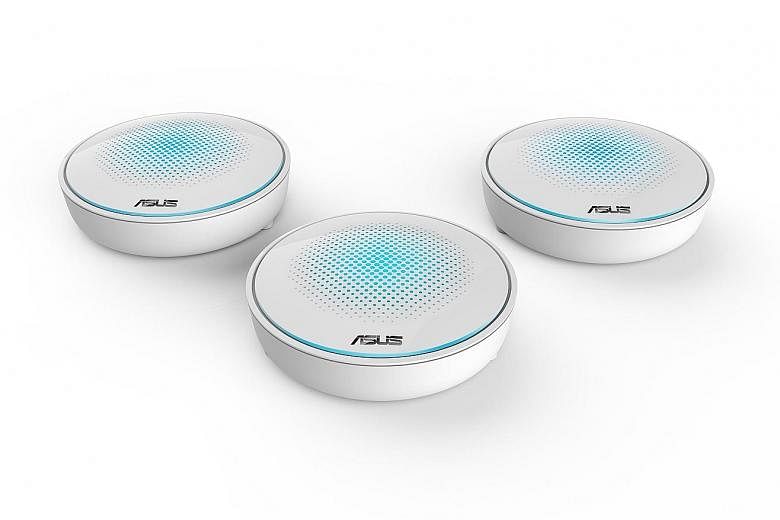Asus is relatively late to the whole-home Wi-Fi system scene, but the company has given its Lyra Wi-Fi System the tools to make a positive impression.
Its best feature is probably the companion Lyra app (for iOS and Android). In terms of usability and looks, it is one of the better mobile apps from Asus. It is also my personal favourite among all the Wi-Fi system apps I have tested.
The app uses Bluetooth on your handset to detect a new Lyra and start the setup process. It is just as easy to add a second or third Lyra. Up to five hubs can be connected together in the same network.
Settings like guest networks, prioritising specific tasks like gaming, and restricting Internet access to specific client devices are available in the app. However, you will still need to use a browser to change the more advanced settings.
Like other Asus routers, the Lyra comes with an integrated security suite from Trend Micro. Dubbed AiProtection, it will block spam and malware, inspect outgoing traffic for suspicious activity, and prevent infected devices on the network from being part of a botnet. The app helpfully updated me with statistics like the number of malicious sites blocked, which is reassuring, but I cannot verify how effective it is.
If your relatives intend to set up Lyra networks in their homes and you are their go-to tech person, the Lyra app will make your IT helpdesk job a cinch. It lets you remotely manage multiple Lyra networks at different physical locations by switching among them.
It is not quite perfect yet. It sometimes takes a while to detect network changes, like the loss of my Internet connection. I had to close and restart the app before it detected this.
-
TECH SPECS
-
PRICE: $659 (pack of three)
ETHERNET INTERFACE: 2 x 10/100/1000 Gigabit LAN
STANDARDS: 802.11a/b/g/n/ac
SECURITY: WPA2, WEP, NAT
-
RATING
-
FEATURES: 4/5
DESIGN: 4/5
PERFORMANCE: 3/5
VALUE FOR MONEY: 3/5
OVERALL: 3/5
Each Lyra hub is small, circular and lacks USB ports. It has just two Ethernet ports. At its top are LEDs that pulse and cycle through various colours to give users an idea of what is happening. You want to see white or cyan - orange or red indicates a problem.
Asus says that the Lyra has four 5GHz antennas, one at each of the cardinal points. The software will decide which two antennas to use, based on proximity, when connecting to other Lyra hubs. One of these antennas is used as a dedicated channel for communication or backhaul between the hubs.
In my testing, the Lyra was slightly off the pace. It managed an average download speed of 220Mbps in the living room where the Internet modem and the first Lyra are placed. This is lower than other Wi-Fi systems that achieved over 300Mbps. The speed was around 130Mbps in the bedroom with my client laptop connected to the second Lyra instead of the first. I tested with just two hubs as they provided adequate coverage.
Overall, the two Lyra hubs provided between 40 and 60 per cent signal strength throughout the apartment. Hopefully, Asus will be able to improve the speeds with future updates.
• While it is a bit slower than its competitors, the Lyra did provide good coverage. The app is easy to use and offers plenty of options.


